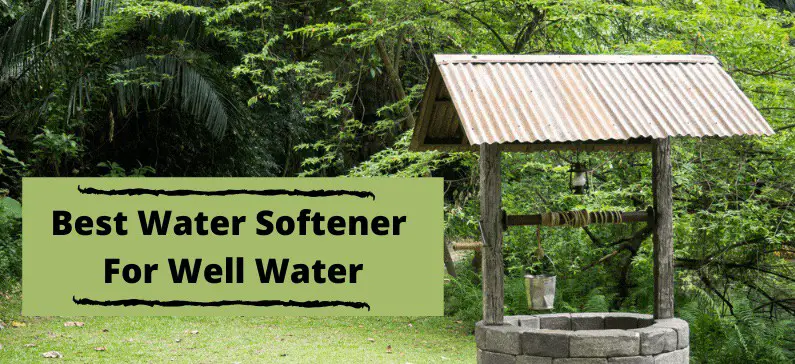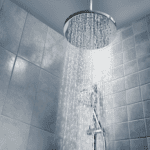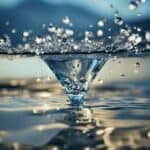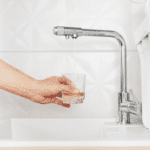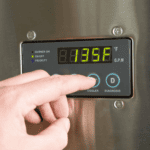Have you recently installed a water softener, only to notice that your once crystal-clear tap water has turned an unappealing shade of yellow? You’re not alone. This issue is a common one among homeowners who have installed water softeners, but the good news is that it is easily fixable.
Causes of Yellow Water
The yellow color in your water is caused by the presence of iron. Iron is naturally occurring in most water sources, and when it is present in high levels, it can cause yellow or rusty-colored water. When a water softener is installed, it removes the hard minerals that cause buildup in pipes and appliances, but it can also cause iron to leach from the pipes and into the water supply.
Yellow water can be caused by a number of different minerals and substances that are present in the water supply. In addition to iron, other minerals and substances that can cause yellow water include:
- Manganese: Manganese is a mineral that is often found in well water and can cause yellow or brown staining in sinks, toilets, and other fixtures.
- Sulfur: Sulfur is another common mineral that can be found in well water and can cause yellow or brown water. This is often accompanied by a strong, unpleasant odor.
- Rust: Rust can be present in water due to aging pipes, corrosion, or other factors. The sediment from rust can cause yellow or brown staining in water.
- Tannins: Tannins are organic substances that are found in some types of water and can cause yellow or brown discoloration. They are often found in water that comes from sources such as peat bogs or swamps.
It’s important to understand the specific cause of yellow water in order to effectively address the issue. A water test can determine the specific mineral or substance causing the yellow discoloration and guide you in finding the best solution.
Solutions to Fix Yellow Water
There are a few different solutions to fix yellow water, and the best solution for you will depend on the levels of iron in your water and the cause of the iron buildup.
- Flushing the Pipes: If the yellow color is due to iron buildup in the pipes, simply flushing the pipes can help to clear out the yellow water. Run the cold water in your home for several minutes until the water runs clear.
- Adjusting the Settings on Your Water Softener: If the yellow color is due to high levels of iron in your water, adjusting the settings on your water softener can help. The water softener will need to be regenerated more frequently to remove the iron from the water.
- Installing a Separate Iron Filter: If the levels of iron in your water are very high, a separate iron filter may need to be installed. This will remove the iron from your water before it enters your home.
- Fleck Black Series Fleck 5600 SXT Digital air injection system
- 1.5 Cubic Ft of Upgraded Centaur Catalytic Carbon
- Remove iron up to 12 ppm, Sulfur up to 10 ppm, Manganese up to 2 ppm
- Easy to install yourself with our instructions and some basic plumbing skills
- Air injection creates pocket of air to super oxidize your water for optimal filtration
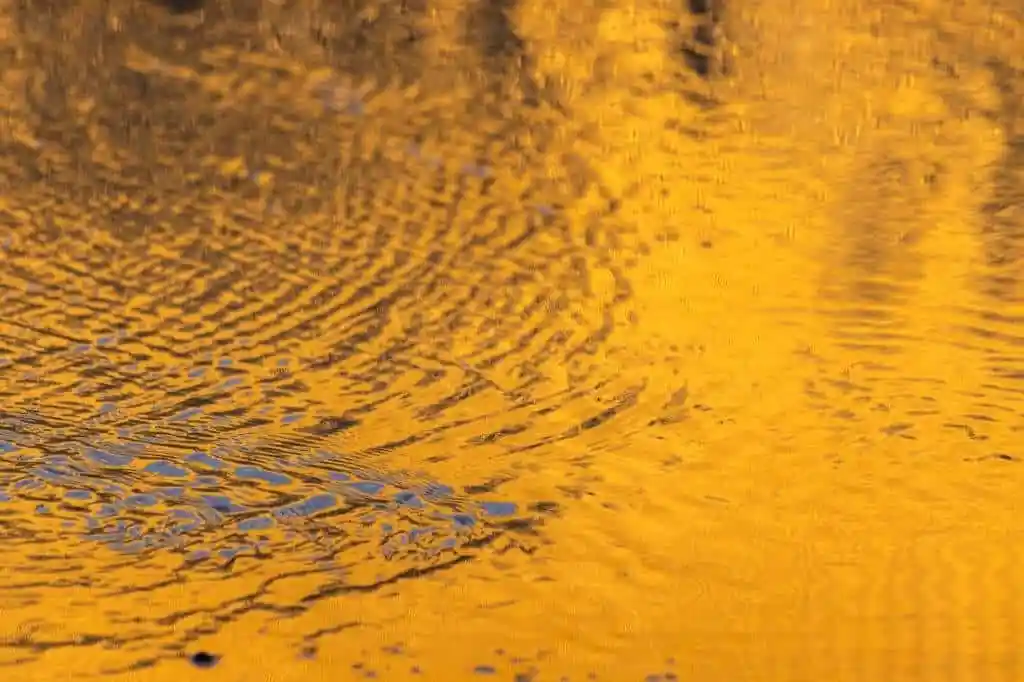
Using Anti-Yellowing Agents to Fix Yellow Water
Anti-yellowing agents, also known as sequestrants, are chemicals that can be added to water to help prevent yellowing caused by iron, manganese, sulfur, and other minerals. These agents work by binding with the minerals in the water, preventing them from causing discoloration.
Using an anti-yellowing agent is a relatively simple and affordable solution to fix yellow water. The product is usually added to the water supply and will work to prevent discoloration over time. Some anti-yellowing agents are added to the water softener’s resin tank, while others can be added directly to the water supply.
It’s important to follow the manufacturer’s instructions when using an anti-yellowing agent. Overdosing on the product can cause other problems and may not provide the desired results. It’s also important to regularly monitor the water supply to ensure that the agent is working effectively and that the water remains clear.
If you’re facing yellow water after installing a water softener, using an anti-yellowing agent is a quick and easy solution that can help you achieve crystal-clear water. Just be sure to follow the manufacturer’s instructions and regularly monitor your water supply to ensure the best results.
Prevention of Yellow Water
To prevent yellow water from occurring, it’s important to have your water tested regularly to ensure that the levels of iron are within an acceptable range. If the levels of iron are too high, it’s important to address the issue promptly to ensure that your water remains safe and clear.
Health Risks of Yellow Water
Yellow water is generally safe to drink, but high levels of iron in drinking water can cause health problems for some people. Ingesting large amounts of iron can cause stomach problems, and high levels of iron in drinking water can stain teeth and cause a metallic taste in the mouth. People with certain health conditions, such as hemochromatosis (a condition where the body absorbs too much iron), should avoid drinking water with high levels of iron.
Cost of Fixing Yellow Water
The cost of fixing yellow water will vary depending on the solution you choose. Flushing the pipes is a relatively low-cost solution, while installing a separate iron filter can be more expensive. The cost of having your water tested will also vary depending on where you live and the type of testing required.
How to Remove Hard Water Stains
Removing hard water stains typically involves a few simple steps. Firstly, identify the affected area, whether it’s on glass, ceramic, metal, or another surface. Then, prepare a cleaning solution. For many surfaces, a mixture of white vinegar and water (equal parts) is effective. If the stains are stubborn, you can use the vinegar undiluted. Apply the solution to the stained area and let it sit for several minutes to break down the mineral deposits. For tougher stains, you might need to let the solution sit for an hour or even overnight. After the solution has had time to work, scrub the area with a non-abrasive brush or sponge to remove the stains. Rinse thoroughly with clean water to remove any vinegar residue. For extra shine, especially on glass or metal, you can polish the area with a soft, dry cloth after rinsing. It’s important to test the vinegar solution on a small, inconspicuous area first to ensure it doesn’t damage the surface. Regular maintenance and prompt cleaning can prevent hard water stains from becoming too severe.
- Hard Water Spot Remover - Hard water deposit cleaner to remove all sorts of stains from water. Calcium lime rust remover for shower glass door. Cleaner for hard water stains, bathtub rust stain remover and limescale remover.
- Rejuvenate: Revas Choice will leave your facilities gleaming! Invisible glass cleaner, shower wall cleaner, bathtub cleaner, hard water cleaner for faucet & shower head cleaner solution descaler, fiberglass shower cleaner, plexiglass cleaner
- Multi Surface Cleaner: Works on every water-stained surface. Window film remover, shower door cleaner, toilet bowl cleaner, tub cleaner, pool calcium remover, rust remover for stainless steel, stone cleaner, shower grout cleaner & tile stain remover.
- Tile & Grout Cleaner: Professional hard water remover for shower tile cleaner. Grout cleaner for shower tile & bathroom tile cleaner. Calcium remover for pool tile, hard water stain remover for tile, ceramic tile stain remover.
- Safe for Kids & Pets with Fresh Scent - Commercial cleaning chemicals with industrial strength shower cleaner, bathroom cleaner & bath tub cleaners to remove hard water stains in toilet scrub free. Strong, simple and safe cleaning with a fresh scent!
Maintenance of a Water Softener and Iron Filter
Water softeners and iron filters require regular maintenance to ensure that they are working properly. Water softeners need to be regenerated on a regular basis, and iron filters need to be cleaned or replaced as needed. Regular maintenance of these systems will ensure that your water remains safe and clear.
Other Benefits of a Water Softener
In addition to preventing yellow water, a water softener provides many other benefits. Water softeners improve the efficiency of appliances, prevent buildup in pipes, and extend the lifespan of appliances. Water softeners also help to improve the overall quality of the water in your home.
Conclusion
In conclusion, yellow water after installing a water softener is a common issue that can easily be fixed. It is important to have your water tested regularly to ensure that the levels of iron are within an acceptable range, and to address the issue promptly to ensure that your water remains safe and clear. There are several solutions to fixing yellow water, including flushing the pipes, adjusting the settings on your water softener, or installing a separate iron filter. It’s important to keep your water softener and iron filter well-maintained to ensure that they are working properly and to prevent yellow water from occurring.
So, if you’re facing yellow water after installing a water softener, don’t panic. With a few simple solutions, you can have crystal-clear water running through your tap once again. Happy hydration!




